
HoNESt History of Nuclear Energy and Society
A newly funded Horizon2020 project entitled History of Nuclear Energy and Society (HoNESt) has been launched on 1 September 2015. Funded by Horizon 2020/Euratom, the collaborative research project HoNESt sets out to explain variety and change in European societies’ relations with nuclear energy on the basis of the historical experience.
Assembling an interdisciplinary consortium of 23 partner institutions across Europe, HoNESt is embarking on the first comprehensive comparative and transnational analysis of nuclear developments and their relations with society to cover 20 countries over the past 70 years.
The project sets out to develop an innovative interdisciplinary framework, combining insights from the history of technology, science and technology studies, environmental history, economic and business history, social movement research, and the study of societal engagement. Moving beyond disciplinary boundaries, the project embraces the complexity of political, technological, economic and environmental dimensions, issues of safety, risk perception and communication, societal acceptance and engagement and media framing.
Societal perceptions of and political responses to nuclear power differ widely between European countries. Public debates about nuclear issues have been characterised by mutual miscomprehensions. Against this backdrop, HoNESt takes seriously the roles and often contradictory perspectives of the actors involved – industry, policy makers, experts, civil society actors and the media –, as well as the rapidly changing societal, economic, political and technological contexts.
Supervisors: Project Coordinator: Albert Presas I Puig, Universitad Pompeu Fabra, Barcelona
Assembling an interdisciplinary consortium of 23 partner institutions across Europe, HoNESt is embarking on the first comprehensive comparative and transnational analysis of nuclear developments and their relations with society to cover 20 countries over the past 70 years.
The project sets out to develop an innovative interdisciplinary framework, combining insights from the history of technology, science and technology studies, environmental history, economic and business history, social movement research, and the study of societal engagement. Moving beyond disciplinary boundaries, the project embraces the complexity of political, technological, economic and environmental dimensions, issues of safety, risk perception and communication, societal acceptance and engagement and media framing.
Societal perceptions of and political responses to nuclear power differ widely between European countries. Public debates about nuclear issues have been characterised by mutual miscomprehensions. Against this backdrop, HoNESt takes seriously the roles and often contradictory perspectives of the actors involved – industry, policy makers, experts, civil society actors and the media –, as well as the rapidly changing societal, economic, political and technological contexts.
Supervisors: Project Coordinator: Albert Presas I Puig, Universitad Pompeu Fabra, Barcelona
less
Related Authors
German Historical Institute London Bulletin
German Historical Institute London
Thomas Lekan
University of South Carolina Columbia
Maiken Umbach
University of Nottingham
Eric Storm
Leiden University
Jan-Henrik Meyer
MPI for Legal History and Legal Theory
Clara Irazábal
University of Maryland, College Park
Fernando Magalhães
Polytechnic Institute of Leiria
Peter Clericuzio
Syracuse University
Luuk Knippenberg
Radboud University Nijmegen
Bernhard Gissibl
Leibniz-Institut für Europäische Geschichte (IEG), Mainz
InterestsView All (30)



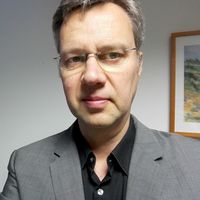
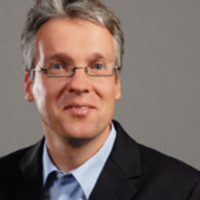
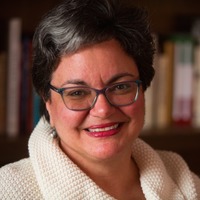
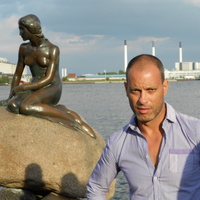

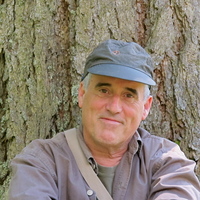
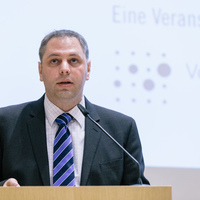
Uploads
Books by HoNESt History of Nuclear Energy and Society
Nuclear Installations at the Border. Transnational Connections and International Implications. An Introduction, p. 1
Arne Kaijser, Jan-Henrik Meyer
Citation | PDF (323 KB)
Siting (and mining) at the Border: Spain-Portugal Nuclear Transboundary Issues, p. 33
M.d. Mar Rubio-Varas, António Carvalho, Joseba De la Torre
Abstract | PDF (328 KB)
"The World's Worst Located Nuclear Power Plant": Danish and Swedish Cross-Border Perspectives on the Barsebäck Nuclear Power Plant, p. 71
Arne Kaijser, Jan-Henrik Meyer
Abstract | PDF (326 KB)
The Superphénix Fast Breeder Nuclear Reactor: Cross-border Cooperation and Controversies, p. 107
Claire Le Renard
Abstract | PDF (313 KB)
East-West German Transborder Entanglements through the Nuclear Waste Sites in Gorleben and Morsleben, p. 145
Astrid Mignon Kirchhof
Abstract | PDF (348 KB)
Papers by HoNESt History of Nuclear Energy and Society
Nature has been an important point of reference for nationalist movements since the nineteenth century. This chapter explores how and to what extent this also holds for regionalism. Starting out with a clarification of key concepts such as nature, conservation and environmentalism, the chapter analyses the relation between regional identities and interests distinguishing four periods: until 1914, during the interwar years, the postwar period and since the 1970s. The decades before the First World War saw the emergence of nationalism, regionalism and nature conservation and a strong associational life. Nature protection focused on regional small-scale natural monuments for the glory of the nation. Ethnic conflict, the expansion of national parks, experiences of expulsion all shaped the varying relations between regionalism and nature protection in the interwar and postwar years. Modern environmentalism’s relation to regionalism varied between convergence and conflict, as regional democratic participation makes regional politics a more open-ended process.
Keywords: nature, region, regionalism, twentieth century history, environment, environmentalism, centre-periphery relations, nationalism, conservation, nature protection.
https://www.bloomsbury.com/uk/regionalism-and-modern-europe-9781474275194/
Author: M.d. Mar Rubio-Varas , António Carvalho , Joseba De la Torre
Pages: pp. 33-69
https://doi.org/10.1484/J.JHES.5.116794
Open-access
Abstract
PDF
Abstract
This article is focused on nuclear transboundary issues between Portugal and Spain, two countries that share a long history of nuclear collaboration and conflict of late, where national borders played a crucial role. The issues at stake cover the full spectrum of the nuclear cycle: uranium mining, power production and waste disposal. The first stage, under two fascist dictatorships, was characterised by collaboration within a common techno-political imaginary, where nuclear energy was understood as a driver of modernity, but with the absence of the public in decision-making processes. The second stage was marked by the advent of democracy in both countries and the reconfiguration of nuclear policies: while Portugal abandoned the nuclear endeavour, Spain implemented a nuclear moratorium but kept ten reactors operative. The third phase, which started in 1986 and goes until the present time, was marked by two crucial events: joining the European Communities (EC) and the Chernobyl accident. The first event allowed Brussels to become a referee on Spanish/Portuguese nuclear disputes. The second one implied that Portugal expanded its institutional vigilance on Spanish nuclear activities and led to the emergence of transboundary social movements against nuclear power.
Author: Astrid Mignon Kirchhof
Pages: pp. 145-173
Available open access:
https://doi.org/10.1484/J.JHES.5.116797
Open-access
Abstract
PDF
Abstract
This article examines the porosity of national borders using the examples of two nuclear facilities at Gorleben and Morsleben located at the West German municipality in the state of Lower Saxony as well as the former Börde district of Saxony-Anhalt (former East Germany). Gorleben and Morsleben became known for their final nuclear waste repositories located directly at the German-German border. Debates and protests surrounding the facilities began in the 1970s and continued after the wall came down. Since opponents had to deal with two different political systems, protests differed in their duration, effect, and methods, even though the border as such was not the problem since West Germans were allowed into the GDR. Transboundary relations were much rather limited by the dictatorial regime on the one side, by the absence of anti-nuclear groups in the GDR until the mid-1980s, and by sufficient coalition partners for West German activists in their own country. Since the disclosure of environmental data by the East German government and the Chernobyl accident a few years later, transboundary relations increased and activists interconnected in many ways. With their protest they indicated that even if the border was a fact, concerns of people in both states transcended it and that borderlands are often characterized by relationality and entanglement.
Author: Arne Kaijser , Jan-Henrik Meyer
Pages: pp. 71-105
https://doi.org/10.1484/J.JHES.5.116795
Open-access
Abstract
PDF
Abstract
The Barsebäck power plant is located 20 km from Copenhagen and the large Swedish cities Malmö, Lund and Landskrona are also within a 30 km radius. When the power plant was planned in the mid-1960s the location seemed ideal with short distances to many consumers in both Sweden and Denmark. In the early 1970s a critical debate on nuclear power began in both countries and Barsebäck became a symbol for the risks of nuclear energy, attracting large-scale annual protest marches from 1976 onwards with participants from both Sweden and Denmark. Once Denmark decided not to pursue nuclear power in the mid-1980s, the Danish Parliament demanded Barsebäck's closure. Indeed, Barsebäck was the first Swedish nuclear power plant to be phased out. This article systematically examines the implications of the border location for transboundary relations involving both conflict and cooperation of those engaged in promoting, building and opposing the Barsebäck nuclear power plant.
Open access at:
Kaijser, A. and Meyer, J-H. (2018) “’The World´s Worst Located Nuclear Power Plant‘: Danish and Swedish cross-border perspectives on the Swedish nuclear power plant Barsebäck.” Journal for the History of Environment and Society 3 (2018), 71-105. DOI: https://doi.org/10.1484/J.JHES.5.116795
The paper is available open access:
Kaijser, A. and Meyer J-H. (2018) “Nuclear Installations at the Border. Transnational connections and international implications. An Introduction.” Journal for the History of Environment and Society 3, 1-32.
DOI: https://doi.org/10.1484/J.JHES.5.116793
Historiographic Essay
Public technology: nuclear energy in Europe
Helmuth Trischler & Robert Bud
Published online: 11 Feb 2019
https://doi.org/10.1080/07341512.2018.1570674
ABSTRACT
The public face of science – and technology
Thinking about technologies as public things
Nuclear energy in Europe: a public technology
Conclusion
References
ABSTRACT
The concept of ‘public science’ has been fruitfully used to indicate the intricate interrelatedness of science and society. In studies of knowledge and its publics, however, technology has been routinely subsumed under science and the distinctive nature of technical knowledge neglected. We are aiming in this article at conceptualizing the public nature of technologies. First, we start with surveying the literature on public science. Second, we scrutinize various conceptual approaches to better understand the social and cultural factors embedded in technologies. In so doing, we reflect upon the twentieth-century history of technologies as public things. Third, we focus on nuclear energy in Europe as an exemplary case of a large-scale technology which has been shaped as part of public culture. We suggest that the specificities of the nuclear as a publicly shaped societal entity can be understood as an example of the wider category we propose to call ‘public technologies’.
KEYWORDS: Public technology, nuclear energy, exhibitions, public protest, Europe
Full access given at:
https://doi.org/10.1080/07341512.2018.1570674
It is organised together with the new "Border Crosssings" research Center at Humboldt-University Berlin, and will benefit from the conceptual expertise of researchers specialising on the issue of borders and transnationalism.
This brochure offers for the first time a comparative overview of the diverse national histories of nuclear energy and societies in 22 countries in Europe – North and South, East and West – and overseas. The short presentations assembled in this brochure are based on more substantive short country reports on the issue.
This brochure presents the first results of the three year international, interdisciplinary Horizon 2020 research project "HoNESt - History of Nuclear Energy and Society" (www.honest2020.eu). It is funded by the Euratom Research and Training Programme 2014-2018 and started in September 2015. Its ambition is threefold:
First, to provide an analytic overview of the rich and diverse historical experience of the relations between the nuclear energy sector and society in the past 60 years across 20 countries.
Second, to draw more systematic conclusions on the mechanisms of successful public engagement between the nuclear sector and society.
Finally, HoNESt’s research is not for the ivory tower. Indeed, HoNESt researchers will share and discuss their findings with the many stakeholders involved in this issue – from the nuclear sector, industry, associations, and civil society. The goal is to help learn from the experience and enhance the ways and modes of decision making about new technologies in democratic societies.
oder Katalysator?
Umweltpolitische Praxen, Strukturen,
Wahrnehmungen im Wandel
(1970er – 1990er Jahre)
Am 26. April 1986 kam es im Atomkraftwerk Tschernobyl zu
einem Super-GAU. In der Folgezeit wurden die Risiken der Atomenergie
breit diskutiert, bekam die Anti-Atom-Bewegung enormen
Zulauf, mussten sich die AKW-Betreiber viele Fragen und neue
Regelungen gefallen lassen.
In der Bundesrepublik reagierte die Regierung auf die Katastrophe
in der Sowjetunion. Sie richtete ein eigenständiges Umweltministerium
ein, das erstmals die Kompetenzen für Umwelt, Naturschutz
und Reaktorsicherheit bündelte.
Die Konferenz zielt darauf ab, Tschernobyl in den Kontext der
Umweltpolitik einzubetten, die sich seit den 1970er Jahren entwickelte.
Die Beiträge nehmen verschiedene Akteure in den Blick,
die diese Politik maßgeblich gestaltet haben: die Zivilgesellschaft,
die Umweltverbände, die Wirtschaft, die Medien.
Stellt das Reaktorunglück einen Wendepunkt in der Geschichte der
Umweltpolitik dar mit gravierenden Einschnitten? Oder beschleunigte
die Katastrophe nur vorhandene und absehbare Entwicklungen?
Rückte der Unfall umweltpolitische Ziele verstärkt in den Vordergrund
der politischen Debatte? Stärkte dies die Umweltpolitik
wirklich nachhaltig? Veränderten sich die Wahrnehmungen von
Umweltproblemen, politischer Mobilisierung, politischem Handeln
und politischen Strukturen? Welche Rückwirkungen hatte die
Reaktorkatastrophe auf die westdeutsche Parteienlandschaft,
insbesondere auf die SPD und die Grünen?
Welche marktkonformen Lösungen diskutierten Politik und Wirtschaft,
wie kamen nach 1986 die ökologische Modernisierung und
die Energiewende voran? Welchen Anteil daran hatte die Explosion
im ukrainischen Reaktor wirklich? Die Wirkung von Tschernobyl
war grenzüberschreitend. Mit Beiträgen aus westeuropäischen
Ländern (Schweden, Italien. Frankreich, Großbritannien, Belgien)
und einem besonderen Schwerpunkt auf die Entwicklung in den
ehemaligen Ostblockländern (die ehemalige Sowjetunion, Ukraine,
DDR, Polen Litauen, Rumänien und Bulgarien) öffnet die Konferenz
die Perspektive auf die transnationale Wirkungsgeschichte von
Tschernobyl.
This conference has two aims:
First, it seeks to assess change in environmental politics and policy making – from its beginnings around 1970 until the 1990s, when the Rio Conference definitely lifted environmental issues to a global scale with the breakthrough of the sustainability agenda and the increasing dominance of the climate change issue. While the early phase of environmental policy is increasingly well-covered by environmental history, we know very little about the subsequent development of the policy.
Against this backdrop, we seek to examine to what extent and how environmental policy and politics changed during the first thirty years of their existence. Transformations may have concerned political, administrative, societal, and media practices and structures as well as problem perceptions. The conference’s goal is to uncover, in particular, the conditions for change, ruptures, intercepted developments and roads not taken.
Secondly, the conference aims at re-assessing the importance of the Chernobyl nuclear accident for change in environmental policy and politics. Did Chernobyl actually constitute a turning point? Did Chernobyl really strengthen environmental policy, by bringing environmental issues back to the centre of political attention? What were the consequences of Chernobyl for the perception of environmental policies? What was the impact on political and societal action, mobilisation and structures? Did Chernobyl offer new windows of opportunity for environmental policy makers.
We will also discuss an alternative interpretation: Is it more appropriate to consider Chernobyl rather as a catalyst where the different environmental debates, growing environmental consciousness and ecological concerns of the 1980s came together to accelerate and strengthen environmental policy. Next to the lasting conflict about nuclear power this included concerns about the visible environmental problems such as dying forests and polluted water, and increasingly also invisible and global concerns about the hole in the ozone layer and climate change. We will look beyond national borders: How does the West German response compare to other European countries – a question that seems relevant with a view to the German phase-out after Fukushima?
Nuclear Installations at the Border. Transnational Connections and International Implications. An Introduction, p. 1
Arne Kaijser, Jan-Henrik Meyer
Citation | PDF (323 KB)
Siting (and mining) at the Border: Spain-Portugal Nuclear Transboundary Issues, p. 33
M.d. Mar Rubio-Varas, António Carvalho, Joseba De la Torre
Abstract | PDF (328 KB)
"The World's Worst Located Nuclear Power Plant": Danish and Swedish Cross-Border Perspectives on the Barsebäck Nuclear Power Plant, p. 71
Arne Kaijser, Jan-Henrik Meyer
Abstract | PDF (326 KB)
The Superphénix Fast Breeder Nuclear Reactor: Cross-border Cooperation and Controversies, p. 107
Claire Le Renard
Abstract | PDF (313 KB)
East-West German Transborder Entanglements through the Nuclear Waste Sites in Gorleben and Morsleben, p. 145
Astrid Mignon Kirchhof
Abstract | PDF (348 KB)
Nature has been an important point of reference for nationalist movements since the nineteenth century. This chapter explores how and to what extent this also holds for regionalism. Starting out with a clarification of key concepts such as nature, conservation and environmentalism, the chapter analyses the relation between regional identities and interests distinguishing four periods: until 1914, during the interwar years, the postwar period and since the 1970s. The decades before the First World War saw the emergence of nationalism, regionalism and nature conservation and a strong associational life. Nature protection focused on regional small-scale natural monuments for the glory of the nation. Ethnic conflict, the expansion of national parks, experiences of expulsion all shaped the varying relations between regionalism and nature protection in the interwar and postwar years. Modern environmentalism’s relation to regionalism varied between convergence and conflict, as regional democratic participation makes regional politics a more open-ended process.
Keywords: nature, region, regionalism, twentieth century history, environment, environmentalism, centre-periphery relations, nationalism, conservation, nature protection.
https://www.bloomsbury.com/uk/regionalism-and-modern-europe-9781474275194/
Author: M.d. Mar Rubio-Varas , António Carvalho , Joseba De la Torre
Pages: pp. 33-69
https://doi.org/10.1484/J.JHES.5.116794
Open-access
Abstract
PDF
Abstract
This article is focused on nuclear transboundary issues between Portugal and Spain, two countries that share a long history of nuclear collaboration and conflict of late, where national borders played a crucial role. The issues at stake cover the full spectrum of the nuclear cycle: uranium mining, power production and waste disposal. The first stage, under two fascist dictatorships, was characterised by collaboration within a common techno-political imaginary, where nuclear energy was understood as a driver of modernity, but with the absence of the public in decision-making processes. The second stage was marked by the advent of democracy in both countries and the reconfiguration of nuclear policies: while Portugal abandoned the nuclear endeavour, Spain implemented a nuclear moratorium but kept ten reactors operative. The third phase, which started in 1986 and goes until the present time, was marked by two crucial events: joining the European Communities (EC) and the Chernobyl accident. The first event allowed Brussels to become a referee on Spanish/Portuguese nuclear disputes. The second one implied that Portugal expanded its institutional vigilance on Spanish nuclear activities and led to the emergence of transboundary social movements against nuclear power.
Author: Astrid Mignon Kirchhof
Pages: pp. 145-173
Available open access:
https://doi.org/10.1484/J.JHES.5.116797
Open-access
Abstract
PDF
Abstract
This article examines the porosity of national borders using the examples of two nuclear facilities at Gorleben and Morsleben located at the West German municipality in the state of Lower Saxony as well as the former Börde district of Saxony-Anhalt (former East Germany). Gorleben and Morsleben became known for their final nuclear waste repositories located directly at the German-German border. Debates and protests surrounding the facilities began in the 1970s and continued after the wall came down. Since opponents had to deal with two different political systems, protests differed in their duration, effect, and methods, even though the border as such was not the problem since West Germans were allowed into the GDR. Transboundary relations were much rather limited by the dictatorial regime on the one side, by the absence of anti-nuclear groups in the GDR until the mid-1980s, and by sufficient coalition partners for West German activists in their own country. Since the disclosure of environmental data by the East German government and the Chernobyl accident a few years later, transboundary relations increased and activists interconnected in many ways. With their protest they indicated that even if the border was a fact, concerns of people in both states transcended it and that borderlands are often characterized by relationality and entanglement.
Author: Arne Kaijser , Jan-Henrik Meyer
Pages: pp. 71-105
https://doi.org/10.1484/J.JHES.5.116795
Open-access
Abstract
PDF
Abstract
The Barsebäck power plant is located 20 km from Copenhagen and the large Swedish cities Malmö, Lund and Landskrona are also within a 30 km radius. When the power plant was planned in the mid-1960s the location seemed ideal with short distances to many consumers in both Sweden and Denmark. In the early 1970s a critical debate on nuclear power began in both countries and Barsebäck became a symbol for the risks of nuclear energy, attracting large-scale annual protest marches from 1976 onwards with participants from both Sweden and Denmark. Once Denmark decided not to pursue nuclear power in the mid-1980s, the Danish Parliament demanded Barsebäck's closure. Indeed, Barsebäck was the first Swedish nuclear power plant to be phased out. This article systematically examines the implications of the border location for transboundary relations involving both conflict and cooperation of those engaged in promoting, building and opposing the Barsebäck nuclear power plant.
Open access at:
Kaijser, A. and Meyer, J-H. (2018) “’The World´s Worst Located Nuclear Power Plant‘: Danish and Swedish cross-border perspectives on the Swedish nuclear power plant Barsebäck.” Journal for the History of Environment and Society 3 (2018), 71-105. DOI: https://doi.org/10.1484/J.JHES.5.116795
The paper is available open access:
Kaijser, A. and Meyer J-H. (2018) “Nuclear Installations at the Border. Transnational connections and international implications. An Introduction.” Journal for the History of Environment and Society 3, 1-32.
DOI: https://doi.org/10.1484/J.JHES.5.116793
Historiographic Essay
Public technology: nuclear energy in Europe
Helmuth Trischler & Robert Bud
Published online: 11 Feb 2019
https://doi.org/10.1080/07341512.2018.1570674
ABSTRACT
The public face of science – and technology
Thinking about technologies as public things
Nuclear energy in Europe: a public technology
Conclusion
References
ABSTRACT
The concept of ‘public science’ has been fruitfully used to indicate the intricate interrelatedness of science and society. In studies of knowledge and its publics, however, technology has been routinely subsumed under science and the distinctive nature of technical knowledge neglected. We are aiming in this article at conceptualizing the public nature of technologies. First, we start with surveying the literature on public science. Second, we scrutinize various conceptual approaches to better understand the social and cultural factors embedded in technologies. In so doing, we reflect upon the twentieth-century history of technologies as public things. Third, we focus on nuclear energy in Europe as an exemplary case of a large-scale technology which has been shaped as part of public culture. We suggest that the specificities of the nuclear as a publicly shaped societal entity can be understood as an example of the wider category we propose to call ‘public technologies’.
KEYWORDS: Public technology, nuclear energy, exhibitions, public protest, Europe
Full access given at:
https://doi.org/10.1080/07341512.2018.1570674
It is organised together with the new "Border Crosssings" research Center at Humboldt-University Berlin, and will benefit from the conceptual expertise of researchers specialising on the issue of borders and transnationalism.
This brochure offers for the first time a comparative overview of the diverse national histories of nuclear energy and societies in 22 countries in Europe – North and South, East and West – and overseas. The short presentations assembled in this brochure are based on more substantive short country reports on the issue.
This brochure presents the first results of the three year international, interdisciplinary Horizon 2020 research project "HoNESt - History of Nuclear Energy and Society" (www.honest2020.eu). It is funded by the Euratom Research and Training Programme 2014-2018 and started in September 2015. Its ambition is threefold:
First, to provide an analytic overview of the rich and diverse historical experience of the relations between the nuclear energy sector and society in the past 60 years across 20 countries.
Second, to draw more systematic conclusions on the mechanisms of successful public engagement between the nuclear sector and society.
Finally, HoNESt’s research is not for the ivory tower. Indeed, HoNESt researchers will share and discuss their findings with the many stakeholders involved in this issue – from the nuclear sector, industry, associations, and civil society. The goal is to help learn from the experience and enhance the ways and modes of decision making about new technologies in democratic societies.
oder Katalysator?
Umweltpolitische Praxen, Strukturen,
Wahrnehmungen im Wandel
(1970er – 1990er Jahre)
Am 26. April 1986 kam es im Atomkraftwerk Tschernobyl zu
einem Super-GAU. In der Folgezeit wurden die Risiken der Atomenergie
breit diskutiert, bekam die Anti-Atom-Bewegung enormen
Zulauf, mussten sich die AKW-Betreiber viele Fragen und neue
Regelungen gefallen lassen.
In der Bundesrepublik reagierte die Regierung auf die Katastrophe
in der Sowjetunion. Sie richtete ein eigenständiges Umweltministerium
ein, das erstmals die Kompetenzen für Umwelt, Naturschutz
und Reaktorsicherheit bündelte.
Die Konferenz zielt darauf ab, Tschernobyl in den Kontext der
Umweltpolitik einzubetten, die sich seit den 1970er Jahren entwickelte.
Die Beiträge nehmen verschiedene Akteure in den Blick,
die diese Politik maßgeblich gestaltet haben: die Zivilgesellschaft,
die Umweltverbände, die Wirtschaft, die Medien.
Stellt das Reaktorunglück einen Wendepunkt in der Geschichte der
Umweltpolitik dar mit gravierenden Einschnitten? Oder beschleunigte
die Katastrophe nur vorhandene und absehbare Entwicklungen?
Rückte der Unfall umweltpolitische Ziele verstärkt in den Vordergrund
der politischen Debatte? Stärkte dies die Umweltpolitik
wirklich nachhaltig? Veränderten sich die Wahrnehmungen von
Umweltproblemen, politischer Mobilisierung, politischem Handeln
und politischen Strukturen? Welche Rückwirkungen hatte die
Reaktorkatastrophe auf die westdeutsche Parteienlandschaft,
insbesondere auf die SPD und die Grünen?
Welche marktkonformen Lösungen diskutierten Politik und Wirtschaft,
wie kamen nach 1986 die ökologische Modernisierung und
die Energiewende voran? Welchen Anteil daran hatte die Explosion
im ukrainischen Reaktor wirklich? Die Wirkung von Tschernobyl
war grenzüberschreitend. Mit Beiträgen aus westeuropäischen
Ländern (Schweden, Italien. Frankreich, Großbritannien, Belgien)
und einem besonderen Schwerpunkt auf die Entwicklung in den
ehemaligen Ostblockländern (die ehemalige Sowjetunion, Ukraine,
DDR, Polen Litauen, Rumänien und Bulgarien) öffnet die Konferenz
die Perspektive auf die transnationale Wirkungsgeschichte von
Tschernobyl.
This conference has two aims:
First, it seeks to assess change in environmental politics and policy making – from its beginnings around 1970 until the 1990s, when the Rio Conference definitely lifted environmental issues to a global scale with the breakthrough of the sustainability agenda and the increasing dominance of the climate change issue. While the early phase of environmental policy is increasingly well-covered by environmental history, we know very little about the subsequent development of the policy.
Against this backdrop, we seek to examine to what extent and how environmental policy and politics changed during the first thirty years of their existence. Transformations may have concerned political, administrative, societal, and media practices and structures as well as problem perceptions. The conference’s goal is to uncover, in particular, the conditions for change, ruptures, intercepted developments and roads not taken.
Secondly, the conference aims at re-assessing the importance of the Chernobyl nuclear accident for change in environmental policy and politics. Did Chernobyl actually constitute a turning point? Did Chernobyl really strengthen environmental policy, by bringing environmental issues back to the centre of political attention? What were the consequences of Chernobyl for the perception of environmental policies? What was the impact on political and societal action, mobilisation and structures? Did Chernobyl offer new windows of opportunity for environmental policy makers.
We will also discuss an alternative interpretation: Is it more appropriate to consider Chernobyl rather as a catalyst where the different environmental debates, growing environmental consciousness and ecological concerns of the 1980s came together to accelerate and strengthen environmental policy. Next to the lasting conflict about nuclear power this included concerns about the visible environmental problems such as dying forests and polluted water, and increasingly also invisible and global concerns about the hole in the ozone layer and climate change. We will look beyond national borders: How does the West German response compare to other European countries – a question that seems relevant with a view to the German phase-out after Fukushima?
International Conference, 2 - 3 December 2016
Heinrich-Boell-Foundation (HBS), Schumannstr. 8, D-10117 Berlin, Germany
Convenors: Christoph Becker-Schaum (Heinrich-Boell-Foundation), Jan-Henrik Meyer (Copenhagen/HoNESt) and Marianne Zepp (Heinrich-Boell-Foundation)
In cooperation with the Rachel Carson Center for Environment and Society, Munich, HoNESt – History of Nuclear Energy and Society Project, and the Center for Metropolitan Studies (TU Berlin).
Does Chernobyl constitute a turning point in the history of environmental policy and politics? Around the world environmental policy was introduced in the early 1970s as a new policy area and arena of political and societal conflict. However, from mid-1970s onwards, as a result of the oil crisis, the new policy came to be increasingly challenged, and considered an obstacle to traditional economic growth objectives. Notably in West Germany, environmental policy’s great leap forward only happened in the 1980s. The debate about the dying forests led to the introduction of new filter technologies and catalytic converters to stop acid rain from killing trees and harming people. It was the shock of Chernobyl, however, that convinced the West German government to eventually establish a separate ministry of the environment at the federal level.
In this edition of the Honest Podcast, as the last in the series, we're delving into the key piece underlying all our discussions over the past 3 years: the stakeholders. As part of the HONEST Project since day 1, stakeholders have been a key part of who we look at historically and the very discussions and debates at our events. This spring the location of one such event was the Deutsches Museum in Munich, where representatives from the energy industry, research institutions, the media, NGO's and government came together to examine both the past and the future of society when it comes to nuclear energy.
Matthew Cotton from the University of York and John Whitton from the University of Central Lancashire have taken a lead of this part of the HoNESt research project, supported by Ioan Charnley-Parry (Lancashire), Gene Rowe, and others.
The podcast is available at: https://soundcloud.com/citizenreporter/stakeholder-engagement-a
The podcast is accessible at:
https://soundcloud.com/citizenreporter/nuclear-energy-as-a-cross
View at: https://youtu.be/0REA0WMrEiU
Risky or beneficial? Exploring perceptions of nuclear energy over time in a cross-country perspective
Wilfried Konrad (Dialogik, Stuttgart), Josep Espluga (Autonomous University, Barcelona)
This webinar explores the role of perceived risks and benefits in shaping attitudes towards nuclear energy in eight countries covering the period from the 1950s up to 2015. The presentation illustrates the arguments and concerns raised by those supporting or opposing nuclear energy, i.e. actors such as utilities, public authorities, civil society organisations, or affected people.
Please register https://register.gotowebinar.com/register/2441782624826829569
Guests on this podcast include:
Arne Kaijser, Royal Institute of Technology in Stockholm
Luigi Piccioni, University of Calabria
Julie Ault, University of Utah
Paul Josephson, Colby College
This programme was recorded in the context of the Conference "Chernobyl – Turning Point or Catalyst? Changing Practices, Structures and Perceptions in Environmental Policy and Politics (1970s-1990s)", which took place in Berlin between the 2 and 3rd December 2016. Co-organised by HoNESt's Jan-Henrik Meyer - in cooperation with Marianne Zepp and Christoph Becker-Schaum of the Heinrich-Boell-Foundation, Berlin. Partners of this conference were the Rachel Carson Center for Environment and Society, Munich, the Centre for Metropolitan Studies Berlin and the Centre for Contemporary History Potsdam.
In this episode of the Honest Podcast we will learn about some of those events and how they would shape the perception and acceptance of nuclear energy.
Featured on this program:
Robert Bud, Science Museum of London
Mar Rubio, Universidad Publica de Navarra
Astrid Mignon Kirchhof, The Deutsches Museum
Eric Berkers, Eindhoven University of Technology
Gábor Palló,Technical University of Budapest
Aisulu Harjula, Lappeenranta University of Technology
This is episode 2, covering the question of “How to conduct such a large body of research”, “How to achieve the goal better understanding society and nuclear energy”.. in the academic world we would call this “the methodology episode.”
In this episode we hear from:
Jan-Henrik Meyer, University of Copenhagen
John Whitton, University of Central Lancashire
Karl-Erik Michelsen, Lappeenranta University of Technology
Mar Rubio-Varas, Universidad Pública de Navarra
Matthew Cotton, University of Sheffield
Access the podcast at: https://soundcloud.com/honest-podcast/honest-an-innovative-approach-to-nuclear-energy-and-society
engagement nuclear europe sociology history HoNESt research
Release date:
9 December 2015
The event is not open to the public. However, the programme can be consulted here.
Conference: “Governing Nuclear Waste”- Conflicts, Participation and Acceptability
FU Berlin - ENTRIA “Disposal options for
radioactive residues: Inter-disciplinary analyses and
develop-ment of evaluation principles“
September 19. + 20.09.2016
Harnack-Haus, Ihnestraße 16-20,
14195 Berlin
Organized by the FFU of the Freie
Universität Berlin
Prof. Dr. Miranda Schreurs
Dr. Achim Brunnengräber (Associate Professor)
The Federal Ministry for Education and Research
(BMBF, 02S9082B) is supporting the interdisciplinary
research platform, “Disposal options for
radioactive residues: Inter-disciplinary analyses and
develop-ment of evaluation principles“ (ENTRIA) for
the period 2013-2017.
The Environmental Policy Research Centre (FFU) of
the Freie Universität Berlin is a member of the
ENTRIA platform and is conducting a project on
governance of radioactive waste storage in Germany
and abroad.
www.entria.de
How to get to the Harnack-Haus:
http://www.harnackhausberlin.
mpg.de/11090/Directions
We ask for registration till 01. September, 2016. For
registration please contact Ms Dörte Themann via EMail:
doerte.themann@fu-berlin.de
The conference is free of charge.
Contact
Freie Universität Berlin
Forschungszentrum für Umweltpolitik
Otto-Suhr-Institut für Politikwissenschaft
Fachbereich Politik- und Sozialwissenschaften
Prof. Dr. Miranda Schreurs
Dr. Achim Brunnengräber (Associate Professor)
Ihnestr. 22
D-14194 Berlin
http://www.polsoz.fu-berlin.de/entria
http://www.fu-berlin.de/ffu
The Second International Conference on Risk Perception, Communication and Ethics of Exposures to Ionising Radiation (RICOMET 2016) will be held from the 1st to 3rdof June 2016 in Hotel Caro, Bucharest, Romania.
RICOMET 2016 is organised under the auspices of 4 Euratom Projects and intends to continue the dialogue started by RICOMET 2015 on social and ethical issues, as well as encourage stakeholder and public participation in nuclear science, technology and innovation.
EAGLE: Enhancing Education, Training And Communication Processes For Informed Behaviors And Decision-Making Related To Ionizing Radiation Risks
OPERRA: Open Project for the European Radiation Research Area
CONCERT: European Joint Programme for the Integration of Radiation Protection Research
PLATENSO: Platform for Enhanced Societal Research related to nuclear energy in Central and Eastern Europe
The focal points of this year's conference are:
Creating a Strategic Research Agenda on Social Sciences and Humanities in Radiation Protection,
Policy making related to different applications of ionizing radiation.
Social science and humanities will meet technical platform representatives such as NERIS, EURADOS, ER-ALLIANCE and MELODI to discuss a trans-disciplinary approach to future research in the radiation protection field. Policy decision makers will be given the opportunity to engage in dialogues with various stakeholders including experts and representatives of informed civil society.
The dialogue between the various stakeholders will be facilitated and guided towards the goal of an improved radiological risk governance.
within the project:
Building a platform for enhanced societal research related to nuclear
energy in Central and Eastern Europe
(PLATENSO, Fission-2013-6.0.1)
April 7th, 2016
Collegium Civitas, Warsaw
Programme
Through a series of seminar talks and a group discussion, the workshop aims to present some examples of nuclear and energy research in social sciences and humanities. The idea is to organize a research network mostly within New Member States countries and share analysis and results, integrating as well international researchers and also different fields and disciplines addressing nuclear and society.
Department of History and Philosophy of Science, National and Kapodistrian University of Athens
Location
Lecture Hall ‘Ioannis Drakopoulos’
University of Athens
Panepistimiou Avenue 30
Organizers
Stathis Arapostathis, National and Kapodistrian University of Athens
Peter Pearson, Imperial College London
Organizing Institutions
Department of History and Philosophy of Science, National and Kapodistrian University of Athens
Imperial College Centre for Energy Policy and Technology, Imperial College London
Sponsors
European Association for the Study of Science and Technology (EASST)
EPSRC-funded Realising Transition Pathways Project (RTP)
HoNESt: History of Nuclear Energy and Society
More Information: Stathis Arapostathis
arapost@phs.uoa.gr
History of Nuclear Energy and Society I: Nuclear Power, International Organizations and Anti-nuclear Movements in a Comparative and Transnational Perspective
and:
History of Nuclear Power and Society II: How to Research Societal Perceptions of and Engagement with Nuclear Energy in a Historical and Interdisciplinary Perspective
Centre for Modern European Studies Research Group
Speakers: Jan-Henrik Meyer, Gabriel Siles-Brügge
Chair: Brigitte Leucht
Albert Presas I Puig (Universidad Pompeu Fabra, Barcelona)
HoNESt – Exploring the History of Nuclear Energy and Relations with Society in Europe
Societal perceptions of and political responses to nuclear power differ widely between European countries. Funded by Horizon 2020/Euratom, the collaborative research project HoNESt (History of Nuclear Energy and Society) sets out to explain variety and change in European societies’ relations with nuclear energy on the basis of the historical experience. Assembling an interdisciplinary team of 22 partner institutions in Europe, HoNESt embarks on the first comprehensive comparative and transnational analysis of nuclear developments and their relations with society in 20 countries during the past 60 years. Providing an innovative interdisciplinary framework, the project embraces the complexity of political, technological and economic dimensions, issues of safety, risk perception and communication, public engagement and media framing. It takes seriously the role and often contradictory perspectives of the actors involved – industry, policy makers, experts, civil society actors and the media –, as well as the rapidly changing contexts over the past 60 years.
Celebrating our 5th anniversary, we will start the semester with the Jubilee talk by
Professor KATE BROWN (American Academy Berlin / Baltimore, USA).
The Great Chernobyl Mystery: How Ignorance became Policy and Politics
Friedrichstr. 191-193, R. 5061
Wednesday, 03.05.2017
This semester talks will range from the history of environmental movements in East Germany to forest fires in the Atlantic Northeast of Canada and the United States, from ports and rivers in India to the so-far-unwritten history of environmental policy emerging from the Nordic Council, from Gorleben's nuclear waste story to the unfamiliar environments of the Caribbean, and the history of climate migration.
Please feel welcome to join our discussion!
Donnerstag, 12.05.2016 Axel Zutz (Cottbus): Von den Mühen der Ebene in der Peripherie Brandenburgs: Protagonisten, Periodika und Praxis des Natur- und Heimatschutzes in der Niederlausitz zwischen 1900 und 1990
Donnerstag, 19.05.2016 Veronika Settele (Berlin): Die Produktion von Tieren. Landwirtschaftliche Tierhaltung in Deutschland, 1950 – 1980
Donnerstag, 09.06.2016 Alison Kraft (Birmingham): Radiological Dangers: From Unsafe Spaces to Environmental Hazard, 1900 - 1958
Donnerstag, 23.06.2016 Regine Auster (Potsdam): Umweltrecht in der DDR –
Zum Wirken von Ellenor Oehler
Donnerstag, 30.06.2016 Christina Gerhardt (Hawaii, USA):
A Rose is a Rose is a Rose: Natural History in Adorno's Negative Dialectics
Donnerstag, 14.07.2016 Santiago Gorostiza (Coimbra): Building a Fascist Wall: The Transformation of the Pyrenees during the Francoist Dictatorship in Spain (1939 – 1959)
Donnerstag, 21.07.2016 Anja Neumann (Frankfurt, Oder): Die Obstbausiedlung „Eden“ bei Oranienburg unter dem Einfluss völkischer Ideen (1893-1933)
Short Bio:
J.R. McNeill has held two Fulbright awards and fellowships from the Guggenheim and MacArthur foundations as well as the Woodrow Wilson Center. His books include Something New Under the Sun (2000), winner of two prizes, listed by the London Times among the 10 best science books ever written (despite not being a science book), and translated into 9 languages; The Human Web (2003), translated into 7 languages; and Mosquito Empires (2010), which won the Beveridge Prize from the AHA and was listed by the Wall Street Journal among the best books in early American history. In 2010, he was awarded the Toynbee Prize for “academic and public contributions to humanity.”